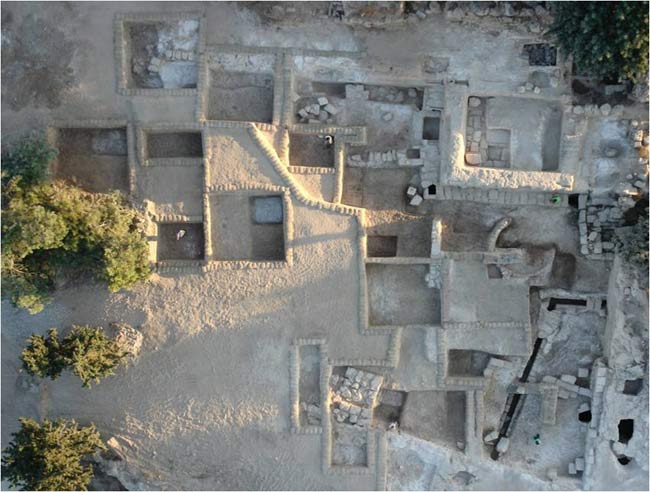Ancient Biblical Gardens 'Bloom' Again

An ancient royal garden has come back into bloom in a way, as scientists have reconstructed what it would've looked like some 2,500 years ago in the kingdom of the biblical Judah.
Their reconstruction, which relied on analyses of excavated pollen, reveals a paradise of exotic plants.
The luxurious garden had been discovered at Ramat Rahel, an archaeological site located high above the modern city of Jerusalem, about midway between the Old City of Jerusalem and Bethlehem. This site was inhabited since the last century of the Kingdom of Judah (seventh century B.C.) until the early Muslim reign in Palestine (10th century), a period that saw many wars and exchanges of power, with the garden evolving under each civilization.
Since excavators discovered the garden, they could only imagine its leafy, flowery inhabitants. That is until now.
The garden relied on an advanced irrigation system, which collected rainwater and distributed it using artsy water installations, including pools, underground channels, tunnels and gutters.
These water installations ended up being the key to the team's new discovery; the researchers found grains of pollen that likely got trapped in plaster when the installations were renovated and the plaster still wet. The result was preserved pollen grains.
In samples dating back to the Persian period (between the fifth and sixth centuries B.C.), the team found grains from local fruit trees, ornamentals and imported trees from distant lands.
Sign up for the Live Science daily newsletter now
Get the world’s most fascinating discoveries delivered straight to your inbox.
"This is a very unique pollen assemblage," study researcher Dafna Langgut, a pollen expert at Tel Aviv University, said in a statement.
For instance, they found evidence of willow and poplar trees, which would have required irrigation to survive in the garden. They also found pollen associated with ornamentals, such as myrtle and water lilies; native fruit trees, including grape vine, common fig and olive; and imported citron, Persian walnut, cedar of Lebanon and birch trees. The researchers think the ruling Persian authorities likely imported these exotics from remote parts of the empire to flaunt their power.
The team suggests these imported plants had a lasting impact on the region and Judaism, said Oded Lipschits of Tel Aviv University. Take the citron tree. It made its first appearance in Israel in this garden, and since has worked its way into Jewish tradition. The citron, or etrog, is one of the four species of plants used at Sukkot, a biblical holiday.
Follow LiveScience for the latest in science news and discoveries on Twitter @livescience and on Facebook.











